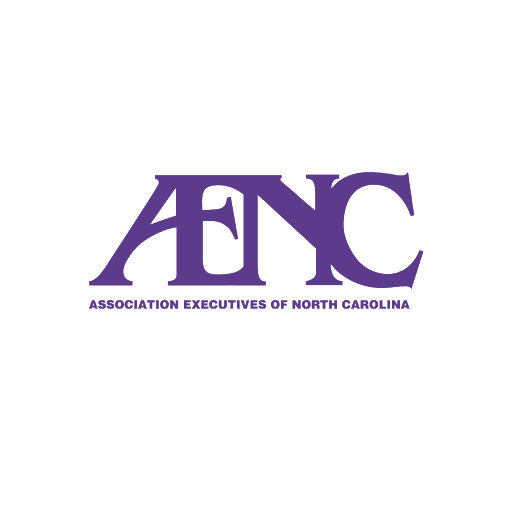Understanding the Incorporation of Audio Visual Innovation in Today's Educational Environments
The assimilation of audio-visual modern technology in academic setups has changed the teaching and finding out process. Educators currently have access to devices that satisfy numerous learning designs, enhancing trainee interaction and collaboration. The incorporation of these modern technologies provides both possibilities and challenges. Comprehending how to successfully implement these tools is necessary. What strategies can instructors employ to take full advantage of the advantages of audio-visual technology in their classrooms?
The Advancement of Audio-Visual Innovation in Education And Learning
As academic requirements evolved over the decades, audio-visual innovation undertook significant transformations that reshaped the discovering setting. Initially, tools such as film projectors and slide programs were the key means of integrating visual aspects right into class. These very early technologies provided instructors with the capacity to existing details dynamically, yet they were restricted in accessibility and interactivity.
With the development of videotape recorder in the 1970s, class began to integrate recorded lessons, broadening the range of academic resources. The introduction of desktop computers in the 1980s additional changed this landscape, enabling the development of multimedia presentations and interactive discovering experiences.
The rise of the internet in the 1990s marked a turning point, making it possible for real-time accessibility to a wide range of audio-visual products. Today, electronic devices such as interactive white boards and on-line discovering systems continue to enhance the instructional experience, cultivating interaction and partnership amongst learners.
Advantages of Audio-Visual Tools for Diverse Understanding Styles
Audio-visual devices play an essential duty in dealing with diverse learning designs by enhancing aesthetic understanding and boosting auditory engagement. By including pictures, videos, and audio, these innovations produce a more comprehensive academic environment. This diverse approach permits teachers to deal with the varied choices and requirements of pupils successfully.
Enhancing Visual Learning
Involvement in the knowing process is significantly enhanced with making use of audio-visual devices, satisfying different learning styles. These tools, such as video clips, infographics, and interactive discussions, offer aesthetic stimulations that aid understanding and retention. Aesthetic students, particularly, benefit from the consolidation of images and computer animations, which can simplify intricate concepts and enhance understanding. In addition, audio-visual resources can illustrate real-world applications, making finding out more pertinent and interesting. By incorporating shade, motion, and noise, instructors can develop a vibrant knowing atmosphere that records pupils' attention and promotes deeper cognitive links. Ultimately, the strategic use audio-visual technology not only supports visual understanding but also enriches the general academic experience for varied students.
Improving Auditory Involvement
A significant advantage of integrating audio-visual tools in education and learning is their capability to improve acoustic interaction amongst pupils. These devices, which incorporate multimedia discussions, podcasts, and interactive audio components, accommodate numerous learning styles, particularly benefiting auditory students (audio visual charlotte nc). By incorporating audio and narration, instructors can develop immersive experiences that catch students' focus and reinforce comprehension. This interaction is necessary, as it fosters a much deeper understanding of the product and advertises retention. In addition, audio-visual tools can assist in joint understanding atmospheres, motivating students to participate in conversations and share their insights. Eventually, the consolidation of audio-visual technology not just sustains auditory involvement yet also enriches the overall instructional experience, making discovering more dynamic and reliable for all trainees
Enhancing Involvement With Interactive Knowing

Moreover, gamification components, such as tests and simulations, can boost motivation and retention, making finding out more satisfying and reliable. These methods not just boost cognitive engagement however additionally cater to varied learning styles, ensuring that all students can take part meaningfully. Because of this, interactive understanding atmospheres foster a sense of community and belonging, eventually causing boosted academic outcomes. Through the assimilation of audio aesthetic modern technology, teachers can transform standard class right into vivid spaces where trainees flourish and actively shape their academic journeys.
Connecting Theory and Method With Multimedia Resources
Multimedia resources work as a critical web link in between academic principles and sensible application in educational setups. By enhancing involvement, facilitating collective discovering experiences, and sustaining diverse discovering styles, these devices develop an extra inclusive and vibrant learning atmosphere - audio visual charlotte nc. This strategy not just promotes deeper understanding but additionally prepares pupils for real-world obstacles

Enhancing Involvement With Multimedia
Engagement in educational setups substantially raises when trainers integrate multimedia resources right into their teaching strategies. The usage of videos, podcasts, and interactive presentations improves the discovering experience, enabling trainees to connect with the product on several degrees. Multimedia resources provide to various finding out styles, providing aesthetic, auditory, and kinesthetic stimulations that can hold students' interest more successfully than conventional lecture approaches. Furthermore, these resources can streamline intricate ideas, making them extra easily accessible and unforgettable. By incorporating multimedia, teachers can develop a dynamic classroom atmosphere that cultivates curiosity and inspires learners. Eventually, the critical use of audio-visual modern technology offers to bridge the space in between academic knowledge and functional application, enriching the academic experience for both trainers and pupils.
Assisting In Collaborative Understanding Experiences
Numerous research studies show that collaborative knowing experiences considerably improve pupil outcomes when integrated with multimedia resources. Multimedia devices assist in communication among trainees, allowing them to engage in analytical and critical thinking collectively. By using video conferencing, collective systems, and interactive presentations, teachers develop settings for synergy and shared learning. These technologies enable students to connect their concepts properly and obtain prompt responses, cultivating a much deeper understanding of the topic. In enhancement, multimedia resources can provide intricate ideas in more absorbable styles, promoting discussion and collaboration. Because of this, the mix of collaborative knowing and audio-visual technology not only improves the instructional experience however likewise prepares students for real-world teamwork characteristics, stressing the value of teamwork and cumulative expertise building and construction.
Sustaining Diverse Discovering Styles
While conventional teaching approaches usually satisfy a restricted variety of learning choices, the combination of audio-visual technology offers an extra comprehensive technique to education. By using multimedia sources such as videos, interactive simulations, and electronic presentations, instructors can attend to numerous discovering styles, consisting of visual, acoustic, and kinesthetic. This versatility enables set apart direction, allowing trainees to involve with content in manner ins which resonate with their specific preferences. In addition, audio-visual tools can promote much deeper understanding by giving multiple representations of intricate concepts. As an outcome, students that may have problem with traditional techniques can locate alternate pathways to success, cultivating an extra fair knowing atmosphere that sustains academic accomplishment for all learners.
Challenges in Executing Audio-Visual Technology
Although audio-visual modern technology holds excellent guarantee for improving instructional experiences, its application commonly encounters considerable obstacles. One primary concern is the monetary problem connected with getting and keeping such equipment, which can strain budgets, particularly in underfunded organizations. Furthermore, poor training for instructors can prevent effective integration, leaving them ill-prepared to utilize the innovation completely. Technical problems, such as software application malfunctions and compatibility issues, may likewise interrupt lessons and irritate both instructors and trainees. Additionally, differing degrees of pupil accessibility to innovation outside the classroom can develop disparities in learning opportunities. The capacity for over-reliance on innovation may take away from crucial mentor techniques, ultimately limiting the educational experience. Addressing these obstacles needs an extensive method, consisting of appropriate funding, expert growth, and fair access to sources, to ensure that audio-visual technology can be leveraged properly in today's academic setups.
Best Practices for Integrating Modern Technology in the Classroom

Additionally, promoting an interactive setting via joint devices urges pupil involvement and engagement. Making use of diverse audio-visual resources provides to different discovering styles, fitting visual, auditory, and kinesthetic learners. Consistently evaluating the influence of innovation on student knowing helps teachers improve their techniques and adapt to changing demands. Lastly, involving pupils in the option of technology advertises possession and motivation. By adhering to these best practices, educators can create a dynamic classroom ambience that properly incorporates technology and enhances the educational experience for all students.
The Future of Audio-Visual Innovation in Education
As class significantly accept modern technology, the landscape of audio-visual devices in education proceeds to progress (audio visual charlotte nc). Future improvements are expected to concentrate on greater interactivity and customization, enabling instructors to tailor finding out experiences to private trainee needs. Advancements such as augmented fact (AR) and virtual fact (VR) will likely give immersive knowing environments, improving trainee engagement and understanding
Artificial intelligence (AI) is positioned to play a significant function in audio-visual technology by supplying real-time feedback and adaptive discovering paths. This integration might aid educators determine and attend to student obstacles much more properly. Cloud-based platforms will help with much easier accessibility to sources and partnership amongst pupils and teachers, regardless of location.
Along with these technical breakthroughs, professional development for educators will certainly be vital, ensuring they are furnished to use these devices properly. Overall, the future of audio-visual technology in education promises to create more vibrant, comprehensive, and impactful understanding experiences.
Regularly Asked Inquiries
How Can Teachers Choose the Right Audio-Visual Tools for Their Classrooms?
Picking suitable audio-visual tools needs teachers to examine their instructional objectives, take into consideration trainee demands, review available technology, and look for recommendations from peers or experts, making certain devices efficiently improve understanding and interaction within their specific class setting.
What Budget Factors to consider Are There for Applying Audio-Visual Innovation?
Budget plan considerations for implementing audio-visual innovation include initial acquisition expenses, maintenance expenditures, training for personnel, and potential software licensing charges. In addition, long-lasting investment in updates and substitutes must likewise be factored right into monetary planning.
Exist Specific Training Resources for Teachers on Audio-Visual Equipment?
Several establishments supply training resources for educators on audio-visual tools, consisting of online training courses, workshops, and training overviews. These resources intend to enhance instructors' skills and self-confidence in effectively integrating modern technology into their training practices.
Exactly how Do We Measure the Efficiency of Audio-Visual Modern Technology in Knowing?
Gauging the efficiency of audio-visual technology in finding out entails evaluating pupil engagement, comprehension, retention prices, and overall academic efficiency. Studies, evaluations, and observational research studies can provide valuable insights into its effect on educational outcomes.
What Are Typical Misunderstandings Concerning Audio-Visual Technology in Education?
Typical false impressions concerning audio-visual technology in check here education include the belief that it ensures interaction and finding out end results, as well as the assumption that all students benefit similarly, forgeting specific learning preferences and needs.